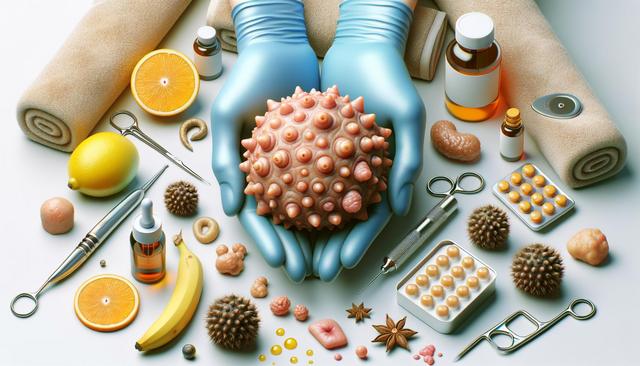Understanding What Causes Warts
Warts are non-cancerous skin growths caused by the human papillomavirus (HPV). This virus can enter the skin through tiny cuts or abrasions and trigger the rapid growth of skin cells on the outer layer. While warts are generally harmless, they can be contagious and spread through direct contact with infected skin or surfaces. There are several types of warts, including common warts, plantar warts, flat warts, and filiform warts, each with distinct appearances and preferred locations on the body.
Factors that may increase the likelihood of developing warts include:
- Weakened immune system
- Frequent use of communal showers or pools
- Skin-to-skin contact with someone who has warts
- Sharing personal items such as razors or towels
Understanding the cause and transmission of warts is the first step in identifying suitable removal options. Knowing the type of wart and its location can also help determine the most appropriate treatment approach.
Over-the-Counter Wart Treatments
For many individuals, over-the-counter (OTC) treatments are the first line of defense against warts. These solutions are widely available, relatively affordable, and can often be used without a prescription. Salicylic acid-based products are among the most commonly used and work by gradually peeling away the infected skin. These treatments come in various forms, such as liquids, gels, pads, and plasters.
Other OTC methods include:
- Freezing sprays (cryotherapy kits) that mimic the effects of professional cryotherapy
- Topical gels with ingredients that help stimulate the body’s immune response
- Adhesive patches containing medication that target wart tissue
While these treatments can be effective, they often require consistency and may take several weeks to show results. It’s important to follow product instructions carefully to avoid damaging surrounding healthy skin. Consulting a pharmacist can also help in selecting the most suitable product for a specific type of wart.
Professional Medical Treatments
When OTC options do not produce the desired results, or if the wart is particularly stubborn or painful, medical treatments offered by healthcare professionals can be considered. Dermatologists and general practitioners can provide a range of procedures, each with its own advantages and considerations. Cryotherapy is one of the most commonly used clinical treatments. It involves applying liquid nitrogen to freeze the wart, which causes the tissue to die and eventually fall off.
Other medical options include:
- Electrosurgery (burning the wart off with an electric current)
- Curettage (cutting or scraping the wart away)
- Laser therapy (using focused light to destroy wart tissue)
- Topical prescription treatments such as stronger acids or immune-modulating creams
These methods are generally more effective for persistent warts and those located in sensitive areas. However, they may also involve some discomfort, potential scarring, or multiple treatment sessions. A healthcare provider can help assess the condition and recommend the most appropriate course of action.
Natural and Alternative Remedies
Some individuals prefer natural or home-based remedies for wart removal, especially when dealing with minor or non-intrusive warts. While scientific support for these methods varies, certain home remedies are widely discussed for their anecdotal effectiveness. One of the most popular options is duct tape occlusion therapy, which involves covering the wart with duct tape and changing it regularly to peel away layers of skin gradually.
Other natural remedies include:
- Applying crushed garlic directly to the wart
- Using apple cider vinegar as a topical treatment
- Applying banana peel or potato slices over the affected area
- Using tea tree oil or castor oil for their antiviral properties
Although these remedies are generally safe, results can vary significantly from person to person. It’s important to monitor the skin for any signs of irritation or reaction. If a wart does not improve after a few weeks of home treatment, professional advice should be sought to rule out other skin conditions.
Prevention and Aftercare Tips
Preventing warts from developing or recurring is just as important as treating existing ones. Maintaining good hygiene and taking precautions can reduce the risk of spreading the virus. Individuals who are prone to warts should be especially mindful of their skin care routines and avoid habits that may contribute to the spread of HPV.
Helpful prevention strategies include:
- Keeping skin clean and dry
- Wearing flip-flops in public showers and locker rooms
- Avoiding direct contact with warts on other people or oneself
- Not sharing personal items like nail clippers or towels
After a wart has been successfully removed, the area should be kept clean and protected to support healing. Avoid picking at scabs or newly formed skin, and use a bandage if needed. Moisturizing the area and applying sunscreen can also help reduce the risk of scarring. If warts continue to appear, it may be helpful to consult a healthcare provider to explore underlying immune-related factors.


